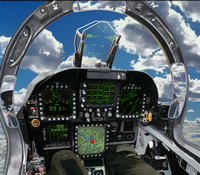When examining the effects of globalization, the international arms market presents an interesting case. It is certainly a global market in terms of distribution, with almost every country in the world, as well as many non-state actors, buying and selling weapons. And its impact is also felt throughout the world, for good as well as ill. But when it comes to the most sophisticated weapons -- such as advanced warplanes, warships, tanks and missiles -- that can reshape the balance of military power between important countries, the same states that have dominated the high-end of the international arms trade for more than half a century continue to do so: the U.S. and Russia.
According to reports published by the Congressional Research Service (.pdf), the Stockholm International Peace Research Institute, and other authoritative public sources, the total value of international arms agreements -- meaning contracts for future deliveries -- varies considerably over time. In 2009, it amounted to $57.5 billion, an 8.5 percent reduction from the record sales of 2008, and also below the 2007 figure of almost $60 billion. The value of weapons actually delivered in 2009 also declined from the previous year, to $31.1 billion as compared with $35.9 billion in 2008.
Still, the substantial changes in the volume of purchases do not greatly affect the rank order of the top arms sellers. For example, the United States' share of new global arms contracts decreased from 60 percent, or $38.1 billion, in 2008 to only 39 percent, or $22.6 billion, in 2009 due to a massive fall-off in new contracts signed. Nevertheless, U.S. arms sellers still secured more contracts by value than everyone else. Russia remained a distant second-place finisher in the global arms sales race in 2009, concluding $10.4 billion in arms deals. Furthermore, 2009 was also the eighth year in a row that the United States delivered more major conventional arms than any other country -- almost $14.4 billion worth, or 41 percent of the global total.

